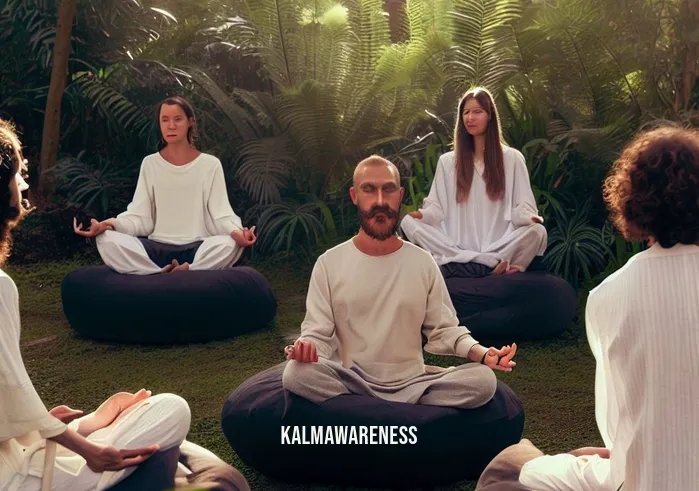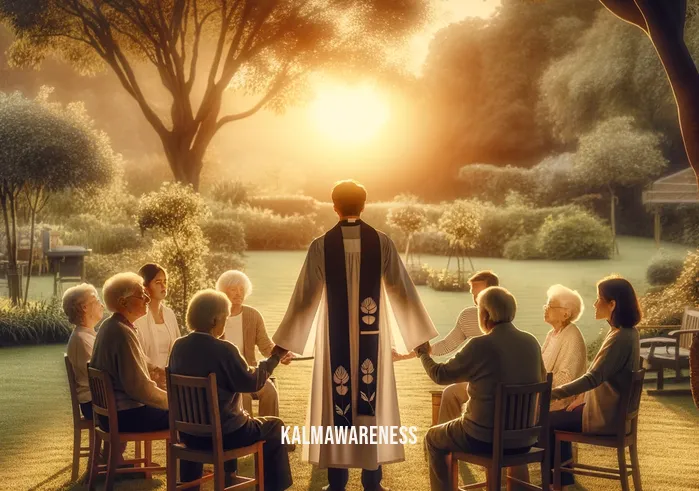How to Sit on a Zafu: The Gateway to Effective Meditation
The art of meditation extends beyond the confines of just closing one’s eyes and seeking inner peace. It requires the right environment, mindset, and especially, posture. If you’ve ever wondered how to sit on a zafu, a type of meditation cushion, you’re not alone. This guide will introduce you to the world of zafu, its importance in meditation, and the correct techniques to use it effectively.
The Essence of Zafu in Meditation
Meditation has transcended from the ancient times to our fast-paced urban life, becoming an essential tool for many in finding calm amidst the chaos. In the heart of the city, there are urban meditations that provide an oasis for the weary mind, offering a brief respite from the overwhelming noises.
One might wonder how a simple cushion can significantly impact the meditative experience. Well, comfort is a crucial component of meditation. Just as yoga emphasizes the importance of surface connection in its practices, as discussed in yoga vs surface, meditation accentuates the importance of a stable and comfortable seating position. And that’s where the zafu comes into play.
Understanding the Zafu
Zafu, traditionally a round cushion, aids in enhancing the meditator’s posture. This cushion, coupled with the right technique, enables the practitioner to sit for prolonged periods without discomfort. The concept of the zafu aligns well with the philosophy of mindful minds, focusing on the present and being fully engaged in the moment.
But, why is it so essential to maintain an optimal posture during meditation? The answer lies in the connection between the mind and body. As Vinny Ferraro, a renowned meditation teacher, often emphasizes, our physical stance can influence our mental state and vice versa.
The Right Way to Sit on a Zafu
Choosing the Right Spot: Before you begin, select a quiet corner, free from disturbances. While some prefer traditional settings like Buddhist temples in Kansas City, others might choose the comfort of their homes.
Positioning the Zafu: Place the zafu on the floor. If you have a meditation mat, it’s ideal to set the cushion on it. Ensure the spot feels right. As meditation can be likened to sitting on a focus side chair, where every element, including the environment, matters.
Adopting the Seated Pose: Sit down such that the edge of the zafu is under your sit bones. Your legs can be in a full-lotus or half-lotus position. For those unfamiliar with these terms, the full-lotus involves placing each foot on the opposite thigh, while the half-lotus has just one foot resting on the opposite thigh.
Aligning the Spine: Keep your spine straight, imagining a string pulling you up from the top of your head. This posture promotes better breathing and keeps you alert, enhancing the quality of meditation.
Hand Placement: Rest your hands on your lap, palms facing upwards. The tips of your thumbs can lightly touch each other, forming an oval shape.
Setting the Gaze: Close your eyes or maintain a soft gaze, looking downwards and a few feet in front of you.
Remember, the primary aim is to maintain a posture where you are both relaxed and alert. Any discomfort will divert your attention, defeating the purpose of the practice.
Final Thoughts
Embarking on a meditation journey requires dedication, understanding, and the right tools. The zafu, when used correctly, can be a transformative tool, assisting you in achieving a deep meditative state. For those seeking further guidance on the path of meditation, resources like Gil Fronsdal’s guided meditation offer invaluable insights.
Meditation, in essence, involves attaining a peaceful state of mind in which thoughts are not occupied by worry, as beautifully encapsulated here.
In the next segment, we will delve deeper into the nuances of breathing techniques during meditation, how they complement your posture on the zafu, and their profound impact on your overall meditative experience. Until then, keep exploring and remember that every step, no matter how small, brings you closer to inner tranquility. Continue reading to enhance your journey towards inner peace.
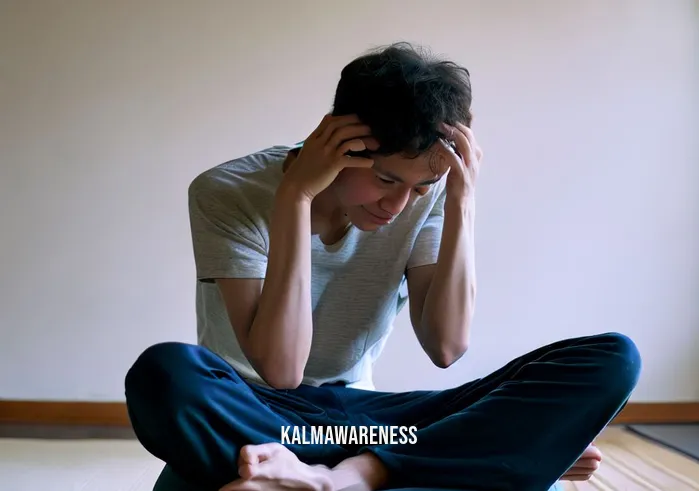
Perfecting Your Zafu Seating: A Deeper Dive
Building on our initial exploration of how to sit on a zafu, it’s imperative to understand that fine-tuning your seating and positioning plays a significant role in your meditation journey. In this chapter, we delve deeper, offering intricate details and insights to ensure that your meditation sessions on the zafu are both comfortable and effective.
Why Perfecting the Zafu Seating is Crucial
Meditation, at its core, is more than just a mental exercise. It is a harmonious blend of the physical and the mental, intricately intertwined. From the teachings of Jon Kabat-Zinn on mindfulness for beginners, we know that the alignment of body and mind is of paramount importance. When you sit on a zafu, your seating’s precision directly affects your mental clarity, the effectiveness of your breathing techniques, and ultimately, the depth of your meditation.
Enhancing Your Zafu Experience: A List of Dos and Don’ts
Dos
- Do ensure that your zafu is placed on a flat and firm surface.
- Do sit towards the front third of the zafu to maintain a natural curve in your lower back.
- Do periodically check your posture, ensuring that your spine remains upright.
- Do adjust your zafu’s height or filling if needed. It’s crucial for your knees to touch the ground for stability.
- Do incorporate mindful software or guided meditation tools if they help in enhancing your focus and experience.
Don’ts
- Don’t slouch. This restricts breathing and can lead to discomfort or pain over time.
- Don’t force a specific leg position. If full-lotus is too challenging, half-lotus or a simple crossed-leg position can work effectively.
- Don’t ignore any persisting discomfort. Adjust your posture or take short breaks if needed.
- Don’t rush into extended sessions. Gradually increase your meditation time as you become more accustomed to sitting on the zafu.
Visualizing Your Zafu Seating: A Comprehensive Table
| Element | Description | Benefit |
|---|---|---|
| Position of the Zafu | Ensure it’s placed on a flat, firm surface, away from distractions | Provides stability, enhancing meditation quality |
| Your Posture | Spine straight, shoulders relaxed, chin slightly tucked | Promotes better breathing, mental clarity, and sustained focus |
| Leg Placement | Full-lotus, half-lotus, or simple crossed-legs based on comfort | Ensures comfort and stability throughout the meditation session |
| Hand Placement | On the lap, palms facing upwards, thumbs lightly touching | Fosters a sense of balance and groundedness |
| Incorporation of Tools | Use of guided meditation tools or mind breaths techniques | Elevates the meditation experience, assisting in deeper dives |
Looking Ahead
As we evolve in our meditation practices, refining our posture, especially on the zafu, becomes an essential endeavor. While the physical posture is just one element, it sets the foundation for a more profound, enriching, and transformative meditation experience. With tools like the 15-minute meditation timer, you can seamlessly blend traditional practices with modern conveniences.
In the next chapter, we will transition into understanding the synergies between zafu seating and breathing techniques. The interplay between posture and breath is a delicate dance, and mastering it can truly unlock deeper realms of meditation. Stay with us, as this journey of exploration promises profound insights. Continue reading and allow yourself to immerse deeper into the world of meditation.
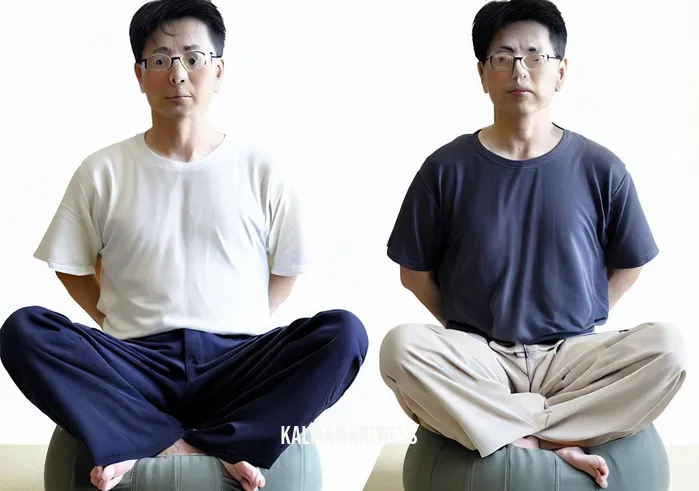
The Inspirational Essence of Zafu Seating
Finding hope and inspiration in the intricate aspects of life is what sets us apart, allowing us to ascend to a more profound state of awareness and contentment. In this vein, the art of positioning oneself on a zafu cushion is not just about physical alignment but also about the spiritual elevation it fosters. Through the course of this chapter, let’s explore how the simple act of sitting on a zafu can be a source of profound inspiration and hope.
Zafu Seating: An Anchoring Point of Meditation
It’s evident from urban meditation practices that amidst the chaos of urban life, finding a quiet moment of reflection and solace becomes a challenge. However, the simple act of seating oneself on a zafu, with intention and awareness, becomes an anchoring point. It serves as a reminder that even in the midst of life’s whirlwinds, one can find peace and calm.
“In the middle of movement and chaos, keep stillness inside of you.” – Deepak Chopra
A Source of Resilience and Strength
Many spiritual leaders and meditation practitioners highlight the resilience one can garner from a consistent meditation practice. As Vinny Ferraro often mentions, a meditation cushion is not just a place to find peace; it’s also a platform to confront our fears, hopes, and aspirations.
“The answers you seek never come when the mind is busy, they come when the mind is still.” – Unknown
Evolving Beyond the Physical
While the immediate concern might be about how to sit comfortably on a zafu, the broader perspective is about transcending physical discomforts and distractions. In the words of a timeless teaching, “I am not the body, I am not even the mind.” This sentiment beautifully captures the essence of using the zafu as a tool to progress beyond the physical realm.
“Meditation is not about stopping thoughts, but recognizing the space between them.” – Anonymous
The Interplay of Comfort and Spiritual Elevation
Utilizing the zafu in one’s meditation practice is not just about achieving physical comfort. It’s about aligning oneself for a deeper spiritual journey, as discussed in various documentaries on meditation. The zafu serves as a bridge, connecting our physical beings with our spiritual aspirations.
“Meditation is the tongue of the soul and the language of our spirit.” – Jeremy Taylor
Looking Forward
While the zafu is a foundational tool in one’s meditation journey, it’s essential to remember its purpose: facilitating a deeper connection to our inner selves. The physical aspects of zafu seating, once mastered, pave the way for an enriching exploration of our inner landscapes.
As we progress, our next chapter will delve into the nuanced relationship between the zafu and our emotional well-being. How does our seating affect our emotional states? How can we harness the power of the zafu to navigate emotional upheavals? These intriguing facets await exploration in the next segment. Stay with us, as our journey into the heart of meditation continues to unfold. Continue reading and take another step towards self-awareness and enlightenment.
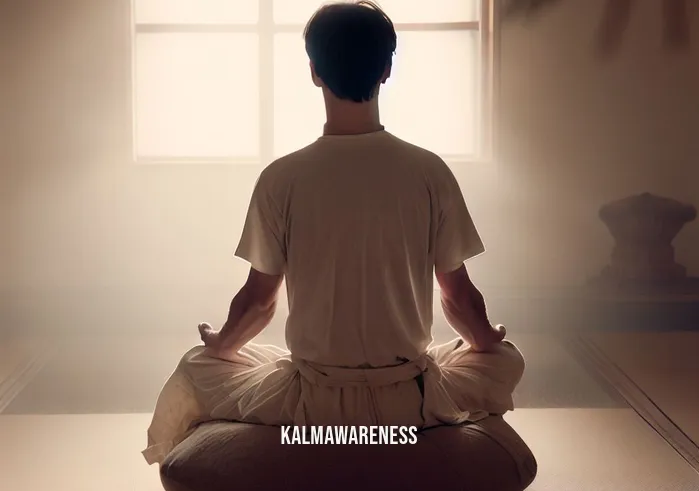
The Zafu Blueprint: Mastering the Seated Meditation
As we venture deeper into the meditative journey, understanding the technical aspects of “how to sit on zafu” is crucial. While previous chapters explored the philosophical and inspirational facets of the practice, it’s now time to break down the specifics. This chapter promises a granular exploration, offering insights into optimizing your seated meditation for both comfort and spiritual elevation.
Essentials Before You Begin
- Selecting the Right Zafu: Before diving into posture, it’s crucial to have the right cushion. The Sit-On-It Focus Side Chair article offers a comprehensive guide on choosing the perfect zafu for your needs.
- Creating the Ambiance: An often overlooked aspect, your environment can significantly impact your meditation. From ensuring adequate lighting to having a calm ambiance, creating a conducive environment is paramount.
- Mind Preparation: As highlighted by Mindful Minds, your mental state before meditation plays a pivotal role. Take a few moments to settle your thoughts, taking deep breaths to center yourself.
Mastering the Zafu Seating Posture
Alignment is Key:
- Spine straight and erect.
- Shoulders relaxed and slightly back.
- Neck in line with the spine.
Leg Positioning:
- Cross-legged: This is the traditional way, where you sit with legs crossed, ensuring both knees touch the ground.
- Kneeling: Alternatively, you can sit on your heels, especially if cross-legged is uncomfortable.
Hand Placement:
- Gyan Mudra: Place the hands on your knees with the tips of the thumb and index finger touching.
- Cosmic Mudra: With one hand on top of the other, let the thumbs touch each other, forming an oval shape.
Eye Focus:
- Closed: For deep introspection and to avoid visual distractions.
- Half-open: Focusing on a point in front of you, beneficial for certain mind-breaths techniques.
Breathing Technique:
- Natural Breathing: Just observe the breath without modifying it.
- Controlled Breathing: Techniques like anxiety attack meditation where the breath is regulated in a specific pattern.
Common Mistakes and Solutions
- Arching the Back: Indicates a misalignment in the spine. Solution: Ensure your hips are higher than your knees, using a cushion or zafu for elevation.
- Leg Discomfort: Prolonged cross-legged positions can cause discomfort. Solution: Alternate between cross-legged and kneeling or try cushions like those discussed in the Yoga vs. Surface article.
- Restlessness: A wandering mind or physical discomfort can lead to restlessness. Solution: Begin with shorter meditation sessions, gradually increasing the duration.
Final Tips
- Stay Adaptable: It’s vital to remember that there’s no “one-size-fits-all” in meditation. What works for one might not for another. Adapt and customize your posture based on comfort and needs.
- Consistency: Even if you’re starting with just 5 minutes daily, consistency is key. Over time, using tools like the 15-minute meditation timer, you can gradually extend your sessions.
In the holistic realm of meditation, understanding and perfecting how to sit on a zafu is both an art and a science. As we draw closer to concluding our deep dive into zafu meditation, our final chapter promises an amalgamation of insights, stitching together all that we’ve explored. In the next segment, we’ll look at the transformational impact of zafu meditation and how it reshapes our lives. Stay tuned for the final revelations. Continue reading to witness the full circle of our meditation journey.
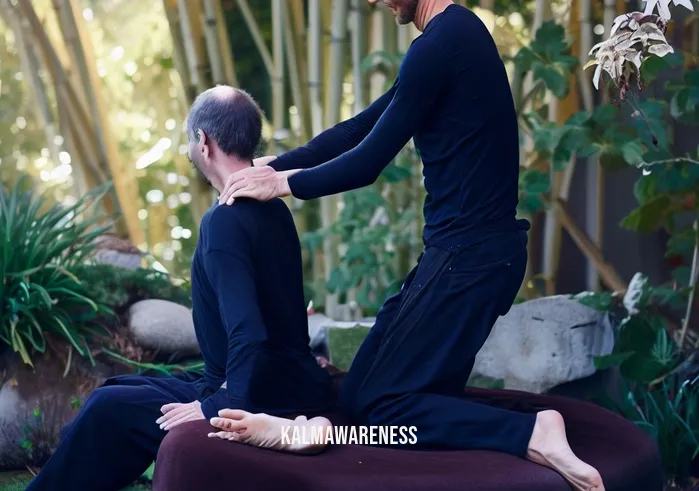
The Zafu Epilogue: Reflecting on Our Seated Journey
As we reach the conclusion of our focused journey on “how to sit on zafu”, it’s essential to pause and reflect on the wealth of insights and practices we’ve delved into. The world of meditation, with its deep-rooted traditions and evolving techniques, can often seem overwhelming. But, as we’ve discovered, mastering the foundational art of seated meditation can set the stage for transformative experiences.
Our Guided Tour: A Quick Recap
From our initial understanding of the mindful software of meditation to the granular exploration of postures and adjustments, our quest has been nothing short of enlightening. We’ve explored how certain elements, often overlooked like the ambiance and environment, can shape our meditative experience. Delving into urban meditations, we realized that inner peace is achievable even amid the hustle and bustle of city life.
Redefining Comfort and Connection
Sitting on a zafu isn’t just about physical comfort. It’s about forging a deep connection with oneself, finding a balance, and grounding oneself in the present moment. The articles from Gil Fronsdal’s guided meditation to the teachings of Vinny Ferraro have emphasized this beautiful synergy between the body, mind, and spirit.
Gratitude for the Journey
To all our devoted readers who have accompanied us on this journey, a heartfelt thank you. Your commitment to exploring the realms of meditation and self-discovery is commendable. As we often say, while the initial steps might seem challenging, the fruits of dedication are profound. May your zafu always be a haven of peace, and may your meditation sessions blossom into experiences of profound clarity and joy.
Continue the Quest
For those ignited by curiosity, our magazine offers a plethora of content, diving deep into topics like Buddhist temples in Kansas City or the spiritual essence behind the phrase “I am not the body, I am not even the mind”. For those seeking further insights into meditation practices during specific times, our Easter meditation segment is a must-read. The realms of mindfulness and meditation are vast, and there’s always more to explore, understand, and experience.
Your Next Steps
As our journey on how to sit on zafu concludes, remember that every ending marks a new beginning. Consider revisiting previous chapters for reinforcement or delve into our other articles that resonate with your spiritual quest. Your feedback is invaluable; share your experiences and suggestions, aiding us in curating content that aligns with your explorative journey.
Until Next Time
As we part ways, for now, always remember the words from Jon Kabat-Zinn’s Mindfulness for Beginners: “You can’t stop the waves, but you can learn to surf.” Life will always be a series of ebbs and flows, but with tools like zafu and the art of meditation, navigating becomes a serene dance.
Stay connected, stay curious, and until our paths cross again in future editions, may your meditation sessions be enlightening, and may your spirit remain ever buoyant.
